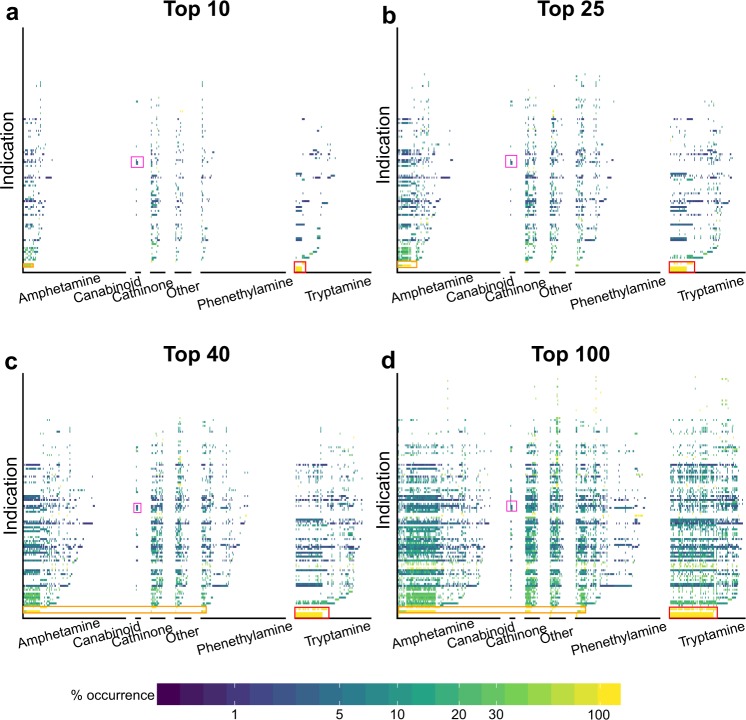Figure 5.
Distribution of mental health indications treated by different classes of psychoactives. As the number of predictions increases (from Top10 (a) to Top100 (d)), the distribution of indications per class becomes increasingly similar. Given the proteomic signature comparison approach used by CANDO to makes these predictions, this indicates that psychoactives from one category are predicted to bind to the same proteins as psychoactives from a different category, resulting in a constant percent occurrence for all compounds predicted to treat an indication. Thus, the Top10 rankings provide the most specificity for analysing the effect of a psychoactive class on selecting mental health indications. Indications of interest are shown with the following boxes: red for Seasonal Affective Disorder, Jet Lag Syndrome, sleep disorders and Broca Aphasia; orange is Binge-Eating Disorder, Narcolepsy, and Anorexia Nervosa; purple is Heroin Dependence, Substance-Related Disorders, and Epilepsy.

